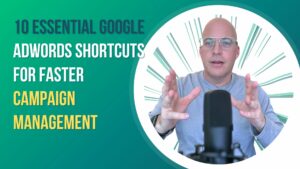Growth marketing is not a new concept. For years, businesses have been trying to increase their customer base, revenue, and market share.
However, with the rise of digital technologies and changing consumer behavior, growth marketing has become more important. Growth marketing is all about experimentation and finding what works to achieve business goals.
It involves a mix of traditional marketing tactics like advertising and public relations and newer growth marketing strategies like influencer marketing and data-driven optimization. In today’s competitive business landscape, growth marketing is no longer just an option but a necessity for survival.
Current State of Growth Marketing
The current state of growth marketing is a mixed bag. On the one hand, some companies have successfully implemented growth marketing strategies and are seeing significant revenue growth and customer acquisition results.
On the other hand, some struggle to keep up with the constantly evolving landscape or are still stuck in traditional approaches that no longer work. One major challenge facing growth marketers today is effectively measuring ROI (return on investment).
With so many channels available for user acquisition or lead generation, it can be challenging to determine which tactics provide the most value for your business goals. Another issue faced by marketers is staying up-to-date with new technologies like AI or AR/VR that have the potential to revolutionize the field but require significant investment to implement.
The Need for Predictions and Insights to Navigate The Future
Predicting where growth marketing strategies will be in five years isn’t an easy task. However, insights from current trends can help inform decisions about where your focus should lie moving forward.
For example, personalization at scale through AI-powered customer experiences is a trend that will only become more important as consumers demand more tailored interactions with brands. Similarly, the rise of niche social media platforms and micro-influencers will continue as people seek more authentic and targeted content.
Businesses must be willing to invest in new technologies and experiment with new tactics while keeping traditional methods in mind. By combining data-driven growth marketing strategies with creative thinking, businesses can navigate the ever-changing landscape of growth marketing and achieve their goals in 2024 and beyond.
The Big Picture: Macro Trends Shaping Growth Marketing in 2024
Advances in Technology and their Impact on Marketing Strategies
Technology is advancing, and we already see its impact on growth marketing. In 2024, it will be more important for marketers to stay up-to-date with the latest technological trends.
Artificial intelligence will play a role in shaping future marketing strategies. With AI and ML, businesses can analyze customer data to deliver personalized content that resonates with specific audiences.
This will be critical as consumers demand highly personalized experiences across all channels. Marketers who can successfully leverage these technologies will be able to create campaigns that deliver impressive results.

Changes in Consumer Behavior and Preferences
Consumer behavior constantly evolves, and we expect significant changes by 2024. One major shift we foresee is the continued rise of conscious consumerism – where customers prioritize ethical and sustainable options over convenience or low price points. Additionally, social media platforms will continue to play a vital role in shaping consumer behavior.
Gen Zers – who already make up a significant portion of the consumer market – are particularly drawn to niche social media platforms like TikTok and Instagram Reels. Growth marketers who pay attention to these trends can capitalize on them by creating content that resonates with younger audiences.
Global Economic Trends Affecting Marketing Budgets and Priorities
Global economic trends will have a significant impact on the growth marketing strategies of the future. In an increasingly uncertain world, businesses may face supply chain disruptions or shifting customer demands. Companies must be prepared to adapt their marketing budgets and priorities based on changing market conditions.
By keeping an eye on macroeconomic indicators such as GDP growth rates, inflation, and interest rates, growth marketers can better predict and respond to changes in the marketplace. Ultimately, companies that prioritize flexibility and agility will thrive for years ahead.
Personalization At Scale: How AI Will Transform Customer Experiences
Personalization is slowly becoming the cornerstone of the marketing world. As customer expectations continue to rise, delivering highly targeted and relevant experiences across all channels is more important than ever.
With Artificial Intelligence (AI), that personalization can now be done at scale. AI-powered personalization enables marketers to provide dynamic content, pricing, and experiences tailored to each consumer.
The technology leverages data from various sources, such as social media profiles, browsing history, and purchase behavior. This data was analyzed using machine learning algorithms to create a detailed understanding of each consumer’s preferences and behaviors.
Marketers can use this information to personalize every interaction with their customers – from personalized product recommendations on e-commerce sites to customized email newsletters based on browsing habits. The possibilities for AI-powered personalization are endless – it will transform customer experiences in ways we’ve never seen before.
Micro-Influencers And The Rise Of Niche Social Media Platforms
Social media has become an integral part of our lives – billions worldwide use platforms like Facebook, Twitter, Instagram, and LinkedIn daily. But as the social media landscape evolves, we’re shifting towards smaller niche platforms. These platforms offer targeted content and specialized communities that cater to specific interests or demographics.
This presents an opportunity for marketers to leverage micro-influencers who have built strong followings within these communities. Unlike traditional influencers with hundreds of thousands or even millions of followers, micro-influencers typically have between 1k-10k followers. Still, they are highly engaged and strongly influence their followers’ buying decisions.
They offer a cost-effective way for brands to reach niche audiences authentically. Growth marketers should keep a close eye on the rise of niche social media platforms and micro-influencers power.
The Future Of SEO: Voice Search, Semantic Search, And Beyond
Search Engine Optimization (SEO) has been a critical tool for growth marketers for years, but with the rise of voice search and semantic search, it’s more important than ever to stay ahead of the curve. Voice search is rapidly gaining popularity – devices like Amazon Alexa and Google Home are already in millions of homes worldwide.
It’s estimated that by 2024, half of all searches will be conducted using voice search technology. This shift is having a significant impact on how we approach SEO.
Voice searches tend to be longer and more conversational, so content needs to be optimized accordingly. Semantic search is another trend affecting SEO – this technology uses machine learning algorithms to understand the context behind users’ queries and deliver more relevant results.
The future of SEO will be heavily influenced by voice and semantic search technologies. Growth marketers must stay current with these trends to maintain their competitive edge in the market.
The Power of Micro-Moments in Mobile Marketing
As we look towards the future of growth marketing strategies, it’s clear that mobile will be an integral part of any successful campaign. But it’s not just about having a responsive website or mobile app – it’s about understanding micro-moment power.
Micro-moments are those brief periods when a user turns to their phone to fulfill an immediate need, such as searching for information, making a purchase, or getting directions. As marketers, we must be present in those moments and provide users with relevant content or messaging that addresses their needs.
One way to do this is through targeted user behavior and preference advertising. For example, users who recently searched for running shoes may be more likely to respond positively to an athletic apparel ad than luxury watches.
By leveraging data and analytics, we can tailor our messaging to the user’s interests and needs in real time. Another tactic is utilizing push notifications strategically.
Instead of bombarding users with generic notifications throughout the day, we can target them when they will likely be receptive. For example, sending a message about a flash sale at lunchtime may get more attention than one sent during rush hour.

Using Data Science to Optimize Email Campaigns
Email marketing may seem outdated compared to newer strategies like social media advertising or influencer marketing. However, with the right approach and data analysis tools in place, it can still be incredibly effective – especially when targeting specific segments of your audience.
Data science allows us to analyze customer behavior and preferences from past interactions with our brand or similar brands. We can craft highly personalized messages that resonate with different segments of our email list using machine learning algorithms and predictive analytics software tools.
For example, customers who purchased pet products in the past have a higher likelihood of opening and clicking on emails with pet-related content. We can segment our list accordingly and personalize our messaging by analyzing data on what types of products customers are interested in.
Plus, email marketing can still be cost-effective compared to other channels. By optimizing our campaigns using data analysis techniques, we’ll be able to increase engagement rates and ROI without breaking the bank.
Leveraging Virtual Events for Lead Generation
COVID-19 has drastically changed businesses’ operations, especially regarding events and networking opportunities. But even after things return to “normal,” virtual events are likely here to stay – and they’re not just a replacement for in-person gatherings. Virtual events offer unique benefits that traditional events simply can’t match.
For example, they allow us to reach a wider audience since attendees don’t need to travel or pay for accommodations. Plus, since attendees can interact from anywhere, there is an internet connection, and we don’t have geographical limitations.
The most significant advantage of virtual events is they offer more data capture opportunities than traditional ones. We can track attendee behavior and measure engagement more accurately through analytics tools like Google Analytics or proprietary event platforms like Hopin.io or Eventbrite.
By leveraging these tools strategically, we’ll be able to identify prospects showing interest in our brand or product offering at different stages of their customer journey. It includes specific actions like registering for keynotes, attending product demos, or downloading content material. By embracing new technologies and gathering insights from data analysis, we can shape growth marketing tactics that will resonate with customers individually while providing us with measurable results and boosting sales figures.
Key Takeaways for Growth Marketers in 2024
Growth marketing in 2024 will be shaped by macro trends such as technological advances. AI transforms how we personalize customer experiences and data science, optimizing email campaigns. Furthermore, changing consumer behaviors and preferences lead to the rise of niche social media platforms. Global economic shifts will affect marketing budgets and priorities as companies compete for customers worldwide.
Niche Subtopics
Going deeper into specific areas of growth marketing, micro-influencers, and voice search SEO are emerging tactics for reaching customers. Micro-influencers on niche social media platforms offer brands access to highly engaged audiences. Meanwhile, voice search SEO is rapidly becoming one of the most important tactics. This is due to the rise of smart speakers like Amazon Echo and Google Home.
Small Details
Some lesser-known but highly effective growth marketing strategies include leveraging virtual events and micro-moments. Virtual events are increasingly popular due to the pandemic-induced shift towards remote work and digital communication. They offer marketers a chance to engage with prospects directly. Additionally, micro-moments are when people turn to their smartphones for instant information. It presents an opportunity for savvy marketers looking to capture attention at just the right moment.
Embracing Change
Growth marketers must be willing to embrace change to stay ahead of the curve. Stay up-to-date on the latest technology and marketing trends. It also means experimenting with new tactics and being open-minded when trying new ideas. Those who can do so will be best positioned for success in 2024 and beyond. Overall, the future of growth marketing is bright and full of possibilities for those willing to adapt and innovate. Growth marketers can position themselves to lead their industries.








